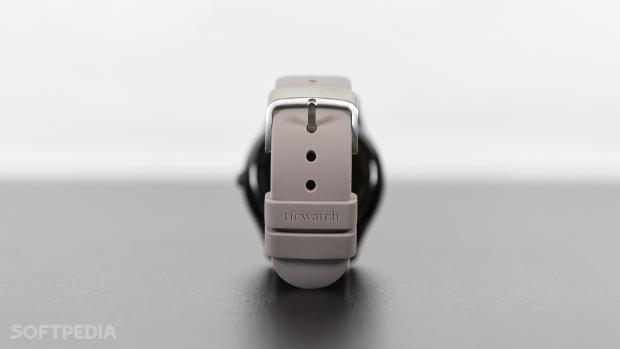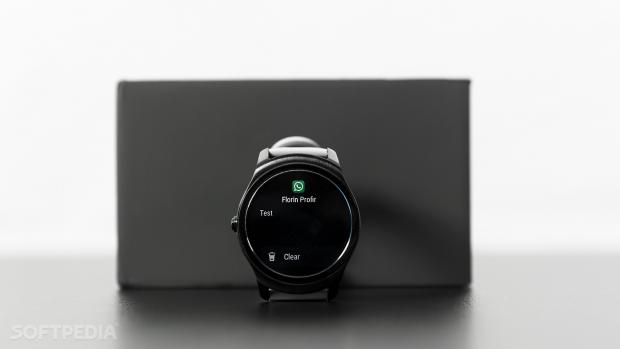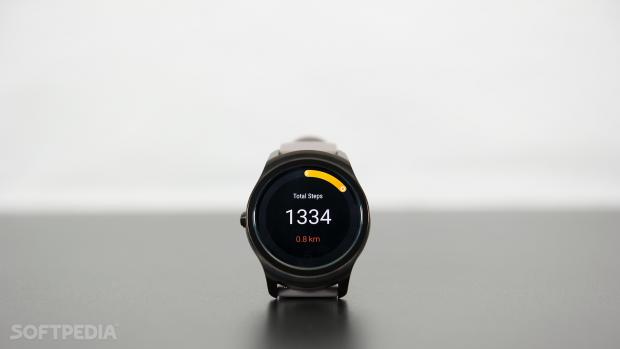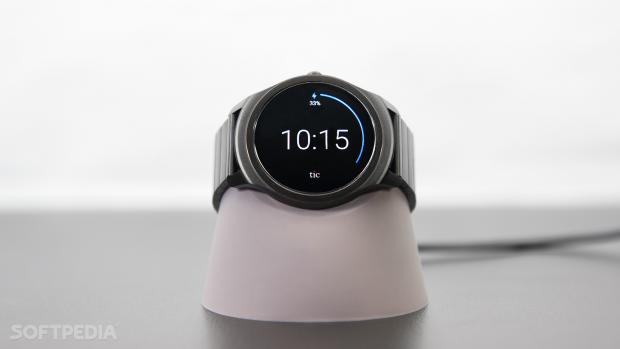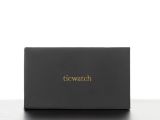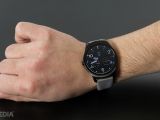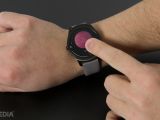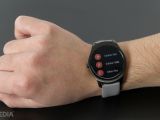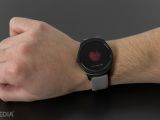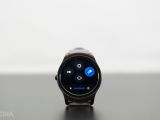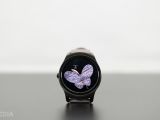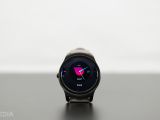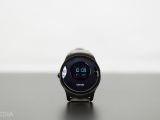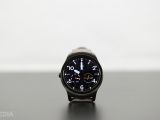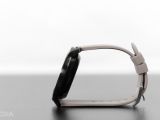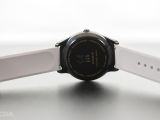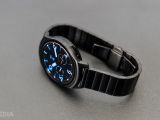| INTRO | DESIGN |
| HARDWARE | SOFTWARE |
| FEATURES | CONCLUSION |
But while nobody can deny that sticking with one of these device makers guarantees that your device would get updates and be supported for a longer period of time, there are also smaller manufacturers that attempt to make themselves noticed with more or less innovative devices, some of which are brought to life through crowdfunding campaigns.
This is the case of the Ticwatch, a smartwatch manufactured by Chinese company Mobvoi with the help of experts from several big companies, including here Google, Microsoft, and Nokia. Mobvoi says that, in order to make the Ticwatch an exquisite smartwatch, it worked with experts from famous universities across the world, including the MIT, Harvard, Oxford, and Stanford.
The Ticwatch has a pretty interesting story and it all starts with the first model that was exclusively available in China. The first-generation watch was more of an experiment, so it was produced only with support for Chinese and sold locally. But after its success in the domestic market, Mobvoi decided it was the time to aim high, so it launched a global version of the watch called “Ticwatch 2” that also supported English.
Since it was pretty difficult for a company the size of Mobvoi to start mass production for a device supported globally, they turned to Kickstarter where they enjoyed a success that not even they expected. The project was funded by nearly 10,000 backers who donated more than $2 million.
The Ticwatch 2 is now in production, and anyone can purchase it for prices starting at $199 and going all the way up to $299 for the top-of-the-range version. We’re testing the Ticwatch Onyx version (part of the Classic lineup) priced at $299 and coming with a stainless steel band (plus a silicone one sold separately).
DESIGN AND BUILD QUALITY
If you’ve used smartwatches before, there’s something that needs to be mentioned from the very beginning: the Ticwatch looks just like a watch, and this is something that you can’t find today as often as you’d normally expect.
The look of the watch is the creation of Scandinavian designer Mika Nenonen and relies on a round case made of different materials, depending on the version you choose.
The Ticwatch Active has an aluminum case and is shipped with liquid silicone rubber band, with the parent company obviously marketing this model for those more interested in activity tracking and fitness.
The Ticwatch Classic, such as the one tested here, features what it’s being called “medical grade stainless steel” for the case, plus a stainless steel band. This is more appropriate for everyday wearing, but it can also cope with activity tracking, though we recommend you switch to a silicone band for such activities.
“A smartwatch that looks like a watch.”
The watch features a 1.4-inch OLED display with 400x400 resolution and 287 DPI and uses 20mm bands with standard adapters, so you can always use a third-party band with no other modifications (heard that, Apple?).
There’s just one side button and no visible sensors, which contributes to the overall look and feel of a genuine watch. Without a doubt, this sounds like the perfect device for those hoping to get more of a watch and less of a futuristic gadget, but there are also drawbacks.
And one of them is the overall build quality. While the Ticwatch 2 feels good on the wrist, it comes with some pretty rough edges, and the outer parts holding the band in place are actually so sharp that they can cause a few scratches if you’re not careful enough. Plus, if you wear the device when putting clothes on, there’s a good chance that your hand gets stuck when getting dressed because of the same thing.
The display looks pretty good, but again, the finish quality leaves a lot to be desired. When analyzing the watch from certain angles and in strong light, the screen looks more like a cheap piece of plastic, especially because it sits approximately 1 mm above the case of the watch.
On the other hand, the Ticwatch 2 feels good on the wrist and it’s pretty light, so you shouldn’t have any problem wearing it 24/7. Nonetheless, you do not recommend doing it, but we’ll discuss more in the next chapters.
HARDWARE
Ticwatch features a polycarbonate shell and boasts a 1.4-inch OLED display with a resolution of 400x400 pixels and 287 DPI.
The screen looks good and features a good color balance, with controls for brightness available with just a few taps. Leaving aside the lack of refinements that we’ve talked about earlier, using an OLED screen certainly pays off, especially when it comes to sunlight readability where the Ticwatch provides decent performance.
The display also supports an always-on mode, which is more like a standby mode for that moment when you don’t look at the watch, and this helps preserve battery life by not keeping the screen always turned on.
The chipset used on the device is built by MediaTek and is the dual-core MT2601, which runs at 1.2 GHz and is coupled to 512MB RAM. Although at first glance this configuration clearly leaves room for improvements, it does its job well and you never feel the need for extra power, as no slowdown can be spotted.
“The essential package.”
Obviously, the Ticwatch comes with support for Bluetooth 4.1, but it also works with Wi-Fi, and the watch actually sends you a notification whenever you are in the range of a wireless network. You are then prompted to launch the companion app on the phone to enter the password, should there be any, and connect the watch to the network.
In terms of sensors, the watch comes with the essential package, namely optical heart rate sensor, proximity sensor, accelerometer, gyroscope, and GPS (which is a mix of Glonass, GPS, and Beidou). Ticwatch comes with both a microphone and a speaker for voice input and sounds, but also with a linear vibrating engine that provides not-as-soft-as-the-Apple-Watch vibrations.
As for the battery, there’s a 300 mAh unit that supports wireless charging with the charger included in the box, and for battery life data, check the dedicated section below.
The watch is rated IP65, and although the parent company says it’s water resistant, you’re not supposed to wear it when taking a shower. Imagine that the Samsung Galaxy S7 has an IP68 rating and you’re not recommended to use it in water, so you'd better stay away from liquids when wearing the Ticwatch.
SOFTWARE
Ticwatch runs the so-called Ticwear 4.0 Global Edition and pairs with your phone using a dedicated Ticwear application that you can find in the app store on Android and iPhone devices (there is no support for Windows phones).
In essence, the operating system powering the smartwatch is a custom Android Wear version that’s cleaner and supports a bunch of new features that are exclusive to this device.
While going for a fork of Android Wear makes sense at first glance, it’s a double-edged sword, actually. First and foremost, the operating system is well optimized for the Ticwatch, so everything runs smoothly with no problem whatsoever.
On the other hand, the device comes with its own Ticwear App Store, which obviously doesn’t have too many options at the moment, so in most of the cases, the built-in apps are what you’re going to use.
“Android Wear power.”
To compensate for the lack of apps in the store, however, the parent company is trying to entice developers into coding for the platform, offering a set of APIs, such as Tickle API, Gesture API, and Voice API to support features exclusively available on this watch. The Android Wear API is also supported.
The device can be paired with both Android and iOS devices and comes with a series of apps by default, including dialer, calendar, health, fitness, and others, but also with voice search and its own assistant called Tico, which we found to be way behind similar technologies developed by larger companies.
In terms of companion apps, the Ticwear app available on Android and iOS doesn’t provide an in-depth look at collected data, as is the case of activity info. Instead, it’s worth mentioning that it offers Apple Health integration, so you can have your data synced with Apple’s own app on the iPhone.
FEATURES
#The smartwatch
The Ticwatch is a pretty capable device that does pretty much the same things as all the other smartwatches out there with a few pros and cons.
First and foremost, given the fact that it’s based on Android Wear, it comes with support for faces, and you can choose from quite a lot of them, many of which come built-in. There are several other faces in the store, and downloading them doesn’t take more than just a few seconds.
The operating system is built around a so-called cubic user interface, which supports swiping gestures on the main screen to quickly access the essential features. Swiping up gets you to the quick cards, swiping left lets you access the Tico personal assistant, down shows the timeline of notifications, and right opens the apps.
Then, there’s the so-called side touch strip called “Tickle,” which does not include a button, but only a strip that you can swipe on to scroll and select, zoom in and out, or adjust the volume up or down. There are also some other gestures, including flip support to make a phone call or activate voice and knocking the watch twice to shuffle songs when listening to music.
Notifications are just as you’d expect them to be and they typically arrive with no delay. And yet, the options that you’re provided with are pretty limited, and although pretty much all third-party apps are supported, you can only clear notifications without options to respond or delete items. Images aren’t loaded on the watch either.
The Ticwatch features what’s being called hands-free assistance, and thanks to the built-in microphone and speaker, you can easily talk on the phone without actually touching the handset.
The Ticwear companion app that needs to be installed on the phone needs to be always running in order to provide full sync with the device, and for some reason, every once in a while, the app asks to “restart Bluetooth.” This is necessary to reconnect to the watch and is a behavior that we’ve experienced more often on iPhone.
Sounds aren’t exactly awesome, but they do their job pretty well, and this is also the case for the vibrations the watch generates. They aren’t as soft and gentle as on the Apple Watch, but you certainly notice whenever a notification lands on the device.
#The fitness tracker
As for the fitness tracking capabilities, there’s something that needs to be mentioned from the very beginning: Ticwatch was developed to work with Google Fit and Apple Health, so it automatically syncs collected data with these apps if you grant the necessary permissions.
Unfortunately, the amount of collected info is not by any means breathtaking and it actually places the Ticwatch behind many other smartwatches on the market.
First and foremost, it’s important to note that the device features just a bunch of activities, namely outdoor or indoor runs and walks, indoor run, cycling and free style. In the case of the typical running activity, you get to see the elapsed time and distance always on the screen, and you can also toggle between speed, pace, current heart rate, and calories burned.
“Hardly your running companion.”
The GPS plays quite an essential role to providing more accurate stats, and when you end a working out session, you get a summary of all these details. For each activity, you can set a target, such as distance, time, and burned calories.
We’ve found the heart rate to be in line with the Microsoft Band and slightly different than the Apple Watch, but in some cases, the displayed statistics are off the target. Repeating the process usually displays a more accurate number.
As far as battery is concerned, GPS is quite a killer, so you’d have to recharge the device quite often, especially if you work out every day. With average use, without involving GPS, the watch doesn’t last for one full day, especially if you receive notifications every once in a while. The manufacturer says it should provide 20 hours of battery life, and in real-life, this is exactly what you’re going to get.
On the good side, charging doesn’t take more than an hour and using the built-in charger is quite convenient, especially because it connects to a power source using a USB cable.
Ticwear is pretty comfortable, and given the fact that it comes with interchangeable bands, you can always choose the setup that works for you, regardless of whether you want to work out or simply use it as a smartwatch for notifications.
Some features like sleep tracking are missing, but on the other hand, you get stand-up reminders that don't work exactly as expected, as we're received notifications to get up and move even when the smartwatch was on the desk.
THE BOTTOM LINE
Ticwatch is certainly a smartwatch that deserves a chance, but when compared to more popular devices selling in big numbers, it easily shows its limits.
The build quality leaves a lot to be desired, which is quite a shame given the fact that the Ticwatch was designed from the very beginning to look more like a watch and less like a smart device. It uses standard 20mm bands, which is a major advantage because you can easily customize its looks without spending a fortune on such accessories.
The operating system runs smoothly, and the hardware does its job well, with the essential feature package also offered to deal with the typical activities that users perform these says. It features the typical sensor lineup, including a heart rate tracker, but it lacks more advanced hardware, such as a barometer.
As far as water resistance is concerned, the Ticwatch is IP65 rated, which isn’t actually what you’d normally expect from a device that is marketed as water resistant. There are already plenty of devices out there featuring a better rating, as is the case of the Samsung Galaxy S7 smartphone that reached IP68.
If you’re planning on buying the Ticwear as an everyday smartwatch, there’s no doubt it’s a decent option, but for fitness tracking, we’d recommend looking somewhere else. It features a few neat touches, such as the tickle sensor, but we found us rarely using it, actually, mostly because its functionality is limited.
All in all, the Ticwatch is a nice effort that gained quite a lot of attention thanks to crowdfunding support, but it certainly needs to do better to be able to compete with the big guys. Hopefully, the third generation would improve the build quality and fitness tracking and then we can finally position it as a rival to the likes of Apple Watch, Samsung Gear, and Fitbit.
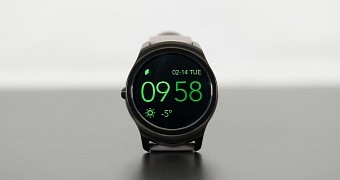
 14 DAY TRIAL //
14 DAY TRIAL // 